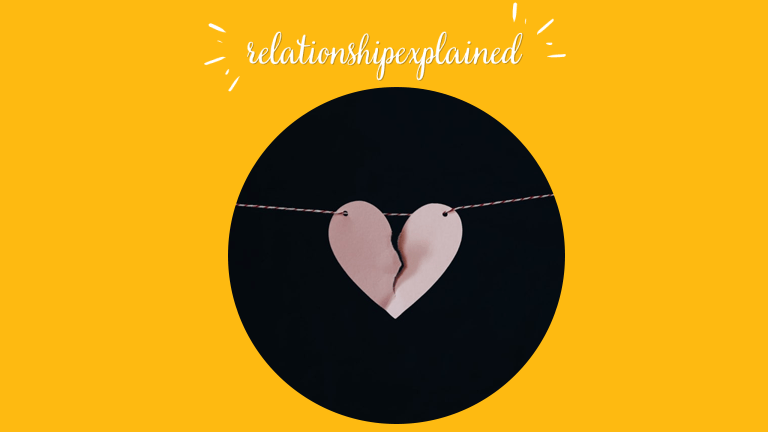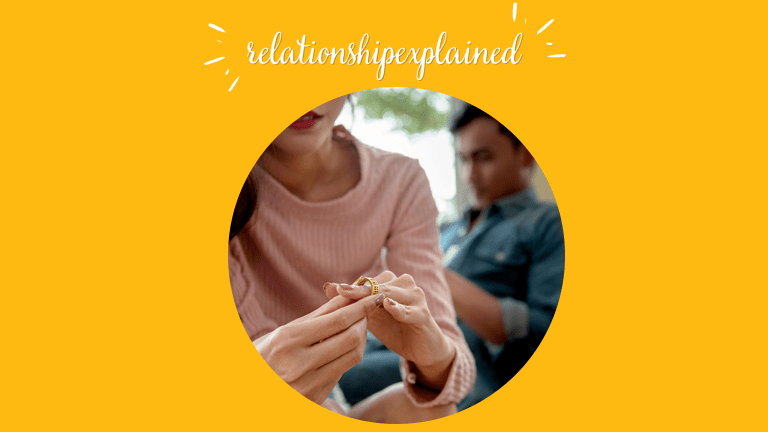What To Do When An Avoidant Pushes You Away
To address the challenges posed by avoidant behavior, focus on open communication, setting clear boundaries, and fostering personal growth. Encourage a safe space for discussing emotions, seek therapy for individual and couples counseling, practice patience and understanding, and prioritize self-care to maintain your well-being throughout the process.
Dealing with the emotional complexities of a relationship can be challenging, especially when one partner exhibits an avoidant attachment style.
When an avoidant pushes you away, it can leave you feeling confused, hurt, and unsure about what steps to take next. Fearful avoidants tend to create emotional distance as a way to protect themselves from vulnerability and intimacy.
However, understanding their behavior and knowing how to respond can help you navigate this difficult situation. In this article, we will explore strategies to cope with an avoidant partner's push-pull dynamic. We will discuss the importance of open communication, setting boundaries, and fostering personal growth.
By taking a proactive approach and prioritizing self-care, you can better navigate the challenges of being pushed away and work towards building a healthier, more fulfilling relationship.
Reasons Why An Avoidant Might Be Pushing You Away
1. Fear Of Intimacy
Fear of intimacy is a common trait among individuals with an avoidant attachment style. These individuals often struggle to become emotionally close and vulnerable in relationships due to their deep-rooted fear of hurt, rejection, or loss of independence.
For a fearful avoidant, the fear of intimacy is quite intense as they experience an inner conflict between their desire for emotional closeness and their fear of rejection or engulfment. And navigating a relationship with an avoidant partner can be challenging if you are someone with an anxious attachment style.
You may seek emotional connection and reassurance but may feel frustrated and neglected by your avoidant partner's emotional distancing.
2. Past Trauma
Past trauma plays a significant role in an avoidant partner's fear of emotional intimacy, resulting in intimacy issues. Traumatic experiences, such as childhood neglect, abuse, or abandonment, can deeply impact their ability to trust and connect with others on an emotional level.
Such experiences lead to insecure attachment styles, resulting in the avoidance of emotional intimacy as a protective measure. Individuals who have suffered past trauma may associate emotional closeness with potential harm or vulnerability. Consequently, they become hyper-vigilant and try avoiding intimacy as a defense mechanism against perceived threats.
3. Need For Independence
The need for independence is a core aspect of avoidant and anxious attachment styles in romantic relationships. Avoidant type individuals highly value their autonomy and freedom. They have a deep-rooted fear that emotional closeness and dependence will compromise their independence and individuality. This fear often stems from past experiences where they felt suffocated or engulfed in relationships.
Avoidant partners may push people away to establish emotional and physical distance, preserving their sense of independence. They may resist relying on others for emotional support, fearing that it will diminish their self-reliance. This need for independence can create a challenging dynamic in relationships, leading to emotional disconnection and difficulties in developing a sense of closeness and interdependence.
4. Difficulty With Emotional Expression
Difficulty with emotional expression can significantly impact relationships, particularly when one partner exhibits avoidant behavior while the other has an anxious attachment style. Avoidant individuals often struggle to openly share feelings and express their emotions, while anxious individuals crave emotional closeness and connection.
This mismatch can create a challenging dynamic, as the avoidant partner's difficulty in expressing emotions can trigger the anxious partner's insecurities and need for reassurance. The avoidant partner's avoidance of emotional expression may stem from past experiences where emotions were invalidated or dismissed.
They may fear vulnerability and see emotional expression as a threat to their independence. This can lead them to push their partner away, withhold their true feelings, and make them emotionally unavailable.
5. Fear Of Losing Control
The avoidant attachment style is marked by a strong need for control in any intimate relationship. They fear losing control over their emotions, actions, or the direction of the romantic relationship. To maintain a sense of control and avoid the unpredictability that comes with emotional attachment, they may push you away.
It is this deep-rooted fear of losing control within avoidant individuals that influences their behaviors and approach to relationships. They possess a strong need for autonomy and independence, fearing that emotional intimacy and dependence will compromise their sense of self and freedom. By maintaining emotional distance, they hope to retain control over their emotions, actions, and the direction of the relationship.
6. Fear Of Being Engulfed
The fear of being engulfed is another common trait within the avoidant attachment style and can significantly impact the behavior of an avoidant partner in a relationship. Avoidant individuals have a strong need for personal identity and autonomy, and they fear being consumed or losing themselves in a relationship. This fear can lead them to create an emotional gap with a romantic partner as a means of self-preservation.
Avoidant partners may push you away to create emotional and physical distance, guarding against the perceived threat of becoming too enmeshed or dependent on the relationship. This fear can involve a loss of sense of self, individuality, and personal space, causing them to feel uncomfortable. By pushing you away, they attempt to prevent a sense of suffocation or being overwhelmed by the demands of close relationships.
7. Fear Of Abandonment
The fear of abandonment is a pervasive element within avoidant attachment styles that significantly impacts relationships. Avoidant people often have an intense fear of being left alone or rejected. This fear arises from early attachment experiences that may have been inconsistent or unreliable.
As a result, they develop defense mechanisms to protect themselves from potential emotional pain. This fear can cause them to avoid intimacy as a preemptive measure, attempting to avoid the pain of anticipated abandonment.
8. Attachment Style
Attachment style is a fundamental aspect of how individuals approach and navigate relationships. It is a reflection of their learned patterns of emotional bonding and their beliefs about themselves and others.
While an avoidant attachment style is characterized by a fear of intimacy and a tendency to create emotional distance, healthy relationships require a secure attachment style. A securely attached style involves a balance of autonomy and connection, with partners feeling safe, supported, and valued.
9. Emotional Regulation Challenges
An avoidant person may have difficulty regulating their emotions and may become overwhelmed by their own feelings. They may push you away as a means of regaining control and creating emotional stability for themselves. By maintaining distance, they can manage their emotions more effectively, avoiding emotional turmoil or potential emotional dependency on others.
How To Deal With The Problem
1. Open And Honest Communication
Foster a safe and non-judgmental environment where both of you can openly express your feelings and concerns. Encourage active listening, empathy, and understanding. Create designated times for open discussions and check-ins to address any issues or concerns that arise. Use "I" statements to express how their behavior affects you, fostering a constructive dialogue that focuses on emotions and needs resulting in a great relationship.
2. Validate Their Emotions
Acknowledge and validate their need for space and independence while expressing your need for closeness and connection. Let them know that you understand their fear of intimacy and that you respect their desire for independence.
Assure them that their feelings are valid and that you are willing to find a balance that respects both your needs. By validating their emotions, you create an atmosphere of acceptance and understanding, which can help them feel more secure and lead to a healthy relationship.
3. Establish Clear Boundaries
Set healthy boundaries that respect both your needs for space and intimacy. Clearly communicate and negotiate boundaries that work for both of you. Discuss and agree upon the amount of personal space needed and how you can maintain a sense of connection while honoring each other's boundaries.
Revisit and adjust boundaries as necessary to ensure they remain fair, which can result in a win-win situation for both partners.
4. Practice Patience And Understanding
Understand that avoidant behavior is rooted in deep-seated fears, low self-esteem, and insecurities. Be patient with their process and avoid taking their distancing personally. Recognize that their avoidance is not a reflection of your worth or the value they place on the relationship. Show understanding and empathy, recognizing that change takes time and effort. Encourage them to share their concerns and fears openly without judgment or pressure.
5. Seek Professional Help
Consider individual therapy for both of you and couples counseling to work through the underlying issues and develop healthy coping mechanisms. A therapist can provide guidance, facilitate communication, and help navigate the challenges of avoidant behavior. They can help identify the root causes of the avoidance, explore strategies for overcoming it, and provide tools for building a more secure and fulfilling relationship.
6. Focus On Personal Growth
Encourage personal growth and self-awareness for both partners. Engage in individual activities and pursue hobbies that foster personal fulfillment and growth. This allows each of you to develop a strong sense of self, which can contribute to a healthier relationship dynamic. Encourage self-reflection, self-care, and personal development, supporting each other's journey toward emotional growth.
7. Foster A Secure Environment
Create an environment that promotes trust, emotional safety, and reassurance. Consistency, reliability, and acts of kindness can help an avoidant partner feel secure in the relationship. Be consistent in your words and actions, follow through on your commitments, and show reliability. Offer support and reassurance through affirmations, physical affection, and gestures of love that reinforce your commitment and support.
8. Respect Their Need For Space
Allow your partner the freedom and autonomy they desire. Avoid being overly clingy or intrusive, and give them the space they need to recharge and process their emotions. Encourage them to communicate when they need alone time, and assure them that you respect their boundaries. Avoid taking their need for space personally, and use this time to focus on your own self-care and personal interests.
9. Practice Self-Care
Prioritize self-care and self-fulfillment. Engage in activities that bring you joy, maintain a support network of friends and family, and take care of your physical and emotional well-being. Nurture your own needs and desires outside of the relationship. Taking care of yourself will contribute to your overall happiness and resilience within the relationship. And it sets a positive example for romantic partners to prioritize their own self-care as well.
10. Evaluate Compatibility
Reflect on whether your needs and expectations align with your partner's avoidant tendencies. Assess if the relationship meets your emotional needs and consider whether a healthy long-term relationship is possible.
Seek clarity on whether both of you are willing to put in the effort to address and overcome avoidant behavior. Also, consider whether it may be necessary to reassess the compatibility of your relationship. Avoidant behavior is consistently detrimental to your emotional well-being. It may be important to prioritize your own needs and consider whether a healthier partnership can be found elsewhere.
Conclusion
In conclusion, navigating a relationship with an avoidant partner who pushes you away requires patience, understanding, and effective communication. By recognizing the underlying causes, such as fear of intimacy, past trauma, and the need for independence, you can approach the situation with empathy.
Implementing solutions like open communication, setting boundaries, and seeking professional help can promote healing and growth within the relationship. It is crucial to prioritize self-care and personal development to maintain your own well-being throughout this process.
However, it's important to evaluate the compatibility of your needs and the potential for long-term fulfillment in the relationship. By fostering a supportive and secure environment, while also respecting each other's emotional space, you can navigate the challenges of an avoidant partner pushing you away and work towards building a healthier, more balanced relationship.













